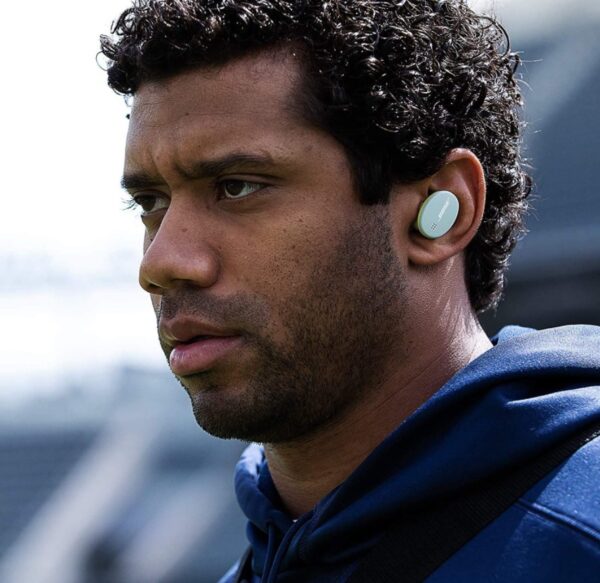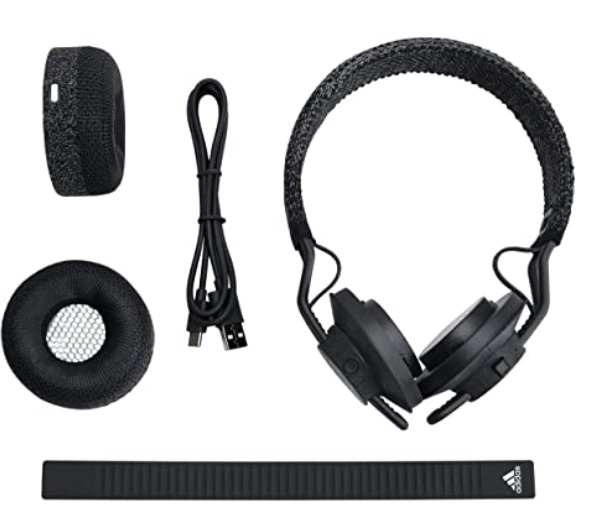Maybe you know about starting running training, it goes well but then you stop after a few weeks? Or do you feel that your shape is not getting better even if you run several times a week? Lack of variation or challenges in the running training, often means that we lose motivation after a short training period, or that we forget to push ourselves and thus don’t experience any clear shape progress. In 8 best tips for music to running training, we look at music concerning this aspect.
Running With Music

You can make the running training more fun with sound, and hereby get the extra energy and joy of running that is needed to run faster, and longer or just forget time and place and enjoy the run. This is true whether you are running for fun, for improving shape, or you are running to improve your time.
There are lots of benefits to running with music in your ears. Studies show, for example, that when you train with music in your ears, you are less aware of pain and fatigue and you can improve your performance by up to 20%.
In another study, participants said that music allows them to think and focus on themselves and acts as a wonderful break from everyday life. Use the music to throw out the negative and get even more power in your weekly training. You will definitely be in a good mood afterward.
How to run with music
When you run, it is thus proven that synchronous music i.e., the tempo of the music – which is measured in beats per minute – that matches your running cadence, gives the greatest effect. And if the music also is motivating, i.e., music that you like, then the effect is even greater.
So, it’s about finding the right rhythm. To get the most out of your music during your running training, you should therefore choose music with the number of BPM (beats per minute) that suits your pace.
You can use the scheme below as a clue, or count your running steps if you want to be exact: Find out how many times per minute you put one foot on the ground, then select music with this number of BPM. Several apps and websites like jog. fm can help you put together your playlist. You can just insert your kilometer time as a start.
BPM Scheme
| Run | BPM |
| Slow recovery run | 100-120 |
| Normal easy running | 130-150 |
| Fast pace | 150-170 |
| Intervals and sprints | 180-190 |
So, the pros are many and the cons are few when it comes to listening to music when you run. Music is thus an effective tool that can affect your mood and your thoughts – in fact, it can change your overall perception of everything that you encounter on your run. But in addition to these psychological effects, music also has a significant impact on your physical performance. Let’s take a closer view of this below…
Music When You Run Improves The Performance

Today, it’s a fact that music can improve your running performance. Many studies have shown that music both before, during and after races has a positive effect on e.g., endurance, running economy and recovery.
A group of Brazilian researchers studied 15 runners at a 5-km distance. The participants were measured on i.a. brain activity, mood and heart rate – and of course their running times.
The study concludes that motivational music with 110-150 BPM (beats per minute) before training made the runners more ready to run and made them cut about 35 seconds of their times on average.
Music had an even greater effect during the run itself – the runners cut an average of 1 minute and 20 seconds of their time. Especially the first 800 meters they ran at a much higher speed than without music.
Slow music (95-110 BPM) after the run also improved the recovery, like the runners, among other things came back faster to their resting heart rate. A recent study from Frontiers in Psychology shows that ‘fast pace’ music makes us work harder and even makes us experience the training as less strenuous than we do when we do not hear music or choose slower rhythms.
Run with music – pace research results
The researchers examined the effect of the music pace on 2 groups of women exercisers who either should do endurance training on a treadmill or strength training. The participants completed the training sessions in silence or with pop music with different tempos in the ears.
The results showed that fast-paced music during training reduced RPE, which stands for perceived exertion rating and covers how hard the training feels. But the training did not only feel less strenuous, the researchers also measured a higher heart rate in the participants when training to fast-paced music.
So, they trained both harder and at the same time rated the training as more comfortable. Especially persons who trained on treadmills experienced this effect, while it was less pronounced in those who did strength training.
Music To Run With Earbuds – Before Running

It is certainly no coincidence that you often see big sports stars walking around with earbuds listening to music in the hours and minutes before they have to perform. Often you see it when a sports team arrives at the stadium and when they leave the bus, many of them have their music earbuds hanging around their neck or they still listen to music with them.
Music before running can “wake up” the body and prepare it both physically and mentally to go out and perform the maximum. There are no precise guidelines as to what type of music it should be – but the effect is probably greatest if the music is running at a relatively high tempo and it is some music that you associate with “having to perform”.
Listen To Music While Running

On the running route itself, so-called synchronous music, where the tempo of the music (“Beats per Minute” (BPM)) matches your cadence (step frequency), has been shown to have the greatest effect. And if the music also is motivating for you, the effect is even greater.
The motivating, synchronous music shows especially great effect on the psychological effect goals that affect the performance. This means that music can make the training feel less hard.
The same training intensity will with music in the ears be perceived as less hard, so in other words, it takes longer before it feels really hard and you need to stop. This means that with music while running, you will be able to push yourself harder and longer and thus get more out of the training.
Research also tells us that asynchronous music – music with a pace that does not match your steps – is better than no music. And in fact, a simple metronome that matches your step frequency is also better than no music. But the greatest effect is achieved by listening to synchronous and motivating music.
Music In Your Ears After Running

After the run, music can be used to improve recovery. Studies have shown that the heart rate and lactate levels in the blood normalize more quickly if you listen to “relaxing” music at a low pace (BPM) after the run.
How to Find Your Running Cadence
Cadence is one of the two factors that make up a runner’s speed. The other factor is stride length.
Cadence when running is often defined as the total number of steps you take per minute. An easy way to measure your cadence when running is to count the number of times your feet hit the ground in 60 seconds.
Cadence can also be defined as the number of steps your foot takes per minute. For example, in some sports watches and other products, the display can show a cadence of 180 steps per minute as 90.
Running cadences and music beats BPM in practice
Synchronous music helps you, by giving you a fixed rhythm that you “just” have to follow. This makes it easier to maintain a constant cadence (step frequency) and thus keep the pace up. To achieve the mentioned performance-enhancing effects during your running training, the music’s BPM must match your cadence – and not the other way around.
The pace of the music must therefore be synchronous with your natural step frequency. You do not have to change your steps trying to hit the pace of the music – it will affect the efficiency. There is no answer to which cadence is the most optimal in general – it is very individual. But most elite runners run at a cadence of around 180 steps per minute.
So, Before you can find music that suits you and your run, you need to know your cadence. Should you choose a running watch such as Garmin Forerunner 245 or a smartphone? The easiest method to find your cadence is to use a running watch that can measure cadence directly. The running watch uses its built-in accelerometer and can thus give you an accurate image of your cadence at all times.
There are also apps on your smartphone that can measure your cadence directly. Once you have found your running cadence, you can find music tracks that suit you: Alternatively, you can find a music track where you feel that BPM ‘hits the Bull’s eye’, and then subsequently find songs that run on the same BPM.
You can use a BMP Calculator here BPM Calculator, which can help you find out what pace there is in the melody/Song. A third option is to count how many steps you take on one foot in one minute and subsequently multiply by 2.
How to Find Music That fits Your Cadence

Now that you know your cadence, you can on most music streaming services, such as Spotify, Deezer, Tidal, or Qobuz, find playlists of music tracks that all run on the same BPM. Spotify has even gone a step further and built a special running feature into their app, where it automatically detects your current running cadence and then plays music that matches your steps.
That’s pretty smart! If you can live with commercials once in a while, it’s even free. If you want to find specific songs and create your very own running playlist, a site such as jog.fm can be recommended. Here you can find and search for music tracks with specific BPM.
Running Motivation to The Long Runs (LSD)
In addition to improving the running performance that music does especially in the harder training sessions, music or other forms of sound impressions can also be used as motivation on the longer runs.
When you run long runs at an easy/moderate pace, you can listen to podcasts or audiobooks, for example. This often makes you forget time and place, and maybe you want to run a little further to get to the next chapter or section.
Listening to Music While Running – Awareness Points
The main disadvantage of hearing music when you run is that it can be dangerous to move in the traffic if you cannot hear especially emergency vehicles but also cars and other road users. Running in the forest seems less dangerous, but it will still be a good idea to be able to hear other runners or mountain bikers in the forest.
It is therefore recommended not to use headphones that completely shut off the surroundings, but choose “open” on-ear headphones so you can hear the traffic. If you prefer in-ear headphones, you should make sure that you have not turned up higher than you still can hear or sense the traffic.
By the way, you can read this post on How to use headphones for great running motivation, if you want to know more about the different types of headphones.

Other awareness points by running with music
If you run with music in the ears, there is also an increased risk that you ‘forget’ to listen to the body’s signals, and thereby load the body more than it benefits from. So be aware when you run with music.
It is also recommended that you only run with music in your ears when you train and drop the music in your ears when you participate in races. You will miss an incredible amount of the good atmosphere if you shut yourself inside your own world with music in your ears.
The mood and the reactions from the spectators and the other participants should probably give you the extra percentage so that you can make it through the race in the best way.
When you are ready you can choose to participate in run rock and roll runs – I mean REALLY concerts to add fun to the runs – check it out for yourself in the link!

I hope you find this post useful and if you have any questions about running with music or want to leave your own personal review, please leave a comment below.
[faq-schema id=”4492″]






I find having music playing in the background definitely energizes me when I am working out and makes me feel in a better mood. I can imagine that for runners it has the same effect. The faster music makes you work harder.
The only thing one has to be careful of when running in the street is keeping an eye out on your surroundings, as it is so easy not to hear a car approaching behind you as you get so immersed in your music sometimes.
I really enjoyed reading your article about running with music. I have often seen runners doing this and thought that maybe they were trying to stop people from talking to them but it seems I was wrong. I don’t know why I hadn’t connected the benefits of music for running as I’m a musician and I get a lot of joy from playing and listening.
I will be finding some music for my running now and using your links to find out my beat per step. Time to load up and get running. Thanks so much for your advice.
Hi Lily
I thought a bit the same about people listening to music as you mention. Then I became aware of the uplifting beats from the music in the fitness center I use. So I took it from there with my “research” a couple of years ago.
Be well
Really enjoyed reading your article, it reminded me of why I love to run. And why I love to run listening to music when I’m running. The music is a great motivator for me. However, your article went into great detail on using motivational music when BPM is between 110-150 and how it improves running performance; and then; the use of slow music for recovery. This all-great information I just learned because of your article. This article elevated not only my motivation, but I intend to pay more attention to the music I listen to before, during and after running. Thank you so much for this great information. Looking forward to reading more of your articles.
Thanks for the comment. Happy that you can use some of it.
Be well